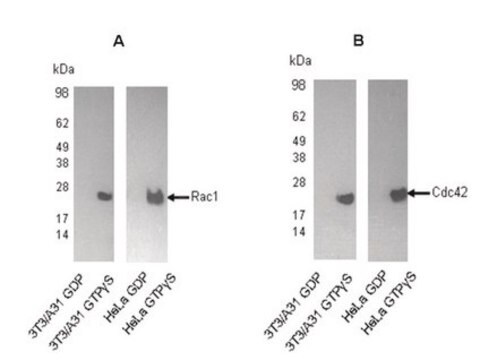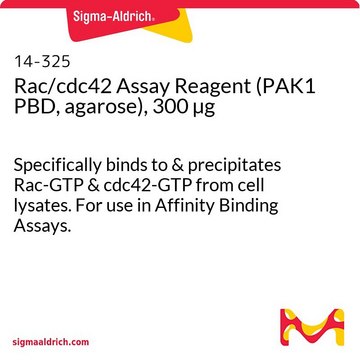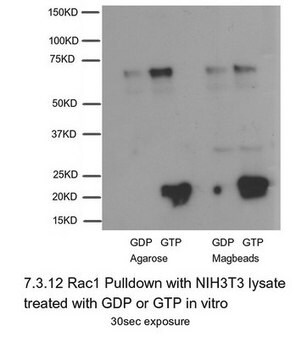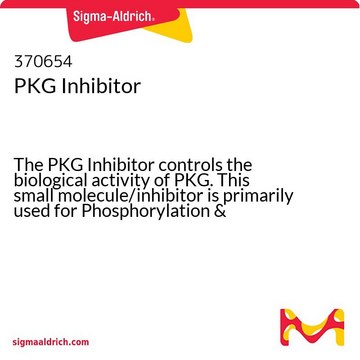17-283
Rac1 Activation Assay Kit
Non-radioactive Rac1 Activation Assay Kit can be used to precipitate Rac1-GTP from cell lysates & detection by a Rac1 specific monoclonal antibody.
Synonym(s):
Activation Assay Kit, Rac1 Activity Kit, Rac1 Assay Kit
About This Item
Recommended Products
Quality Level
species reactivity
human, rat, mouse
manufacturer/tradename
Upstate®
technique(s)
activity assay: suitable
affinity binding assay: suitable
NCBI accession no.
UniProt accession no.
shipped in
dry ice
Gene Information
human ... RAC1(5879)
General description
Application
Components
Mg2+ Lysis/Wash Buffer, 5X (Cat.# 20-168)
100X GTPγS, 10mM (Cat.# 20-176)
100X GDP, 100mM (Cat.# 20-177)
Rac/cdc42 Assay Reagent (PAK1 PBD, agarose) (Cat.# 14-325)
Quality
Linkage
Legal Information
Signal Word
Danger
Hazard Statements
Precautionary Statements
Hazard Classifications
Aquatic Acute 1 - Aquatic Chronic 2 - Eye Dam. 1
Storage Class Code
10 - Combustible liquids
Regulatory Listings
Regulatory Listings are mainly provided for chemical products. Only limited information can be provided here for non-chemical products. No entry means none of the components are listed. It is the user’s obligation to ensure the safe and legal use of the product.
JAN Code
17-283:
Certificates of Analysis (COA)
Search for Certificates of Analysis (COA) by entering the products Lot/Batch Number. Lot and Batch Numbers can be found on a product’s label following the words ‘Lot’ or ‘Batch’.
Already Own This Product?
Find documentation for the products that you have recently purchased in the Document Library.
Our team of scientists has experience in all areas of research including Life Science, Material Science, Chemical Synthesis, Chromatography, Analytical and many others.
Contact Technical Service










